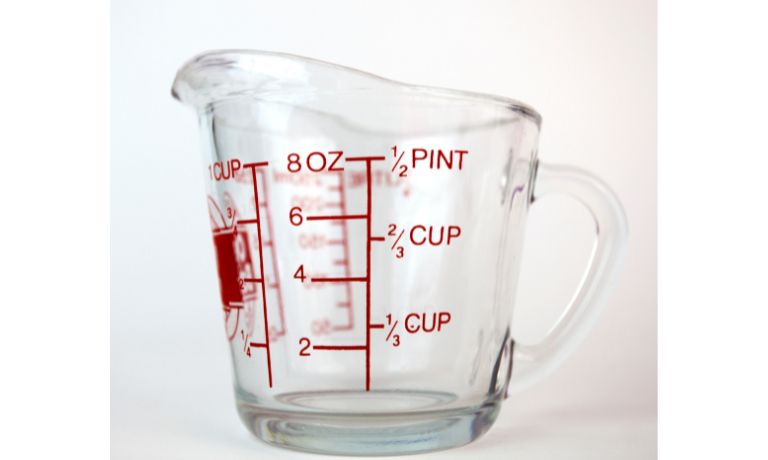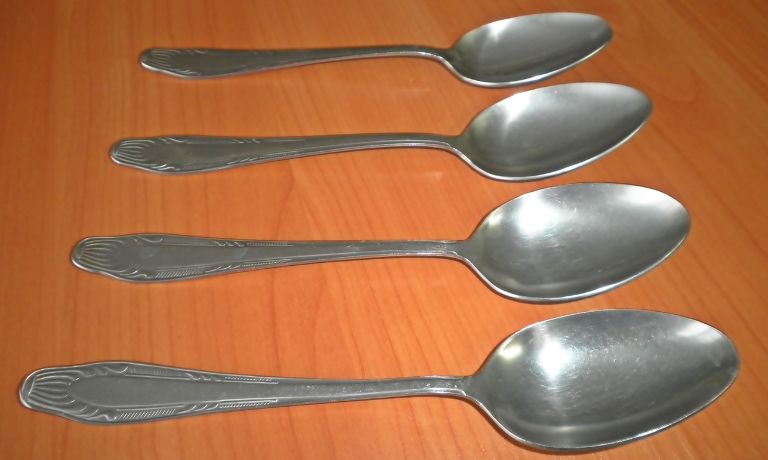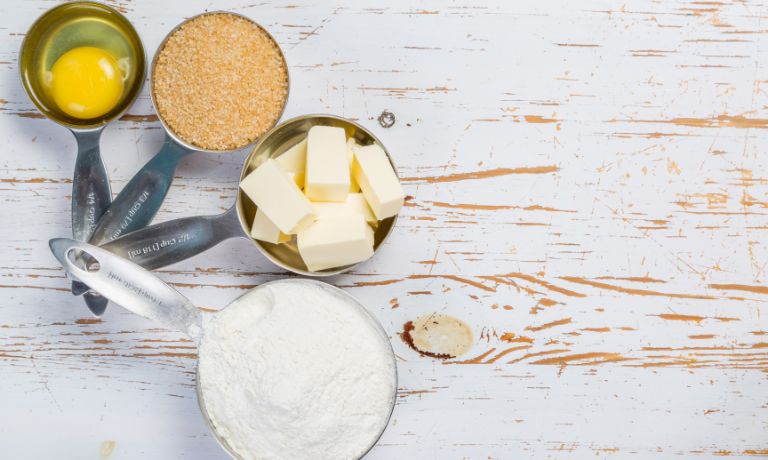Are you often in the kitchen searching for measurements and conversions? Today we are taking a closer look at one of the most common conversions – how many tablespoons is in 1 2 cup? It’s important to know exactly how many tablespoons are contained within one-half cup for perfect results every time.
In this blog post, we will provide a simple guide on how many tablespoons are in 1/2 cup. You can now quickly calculate the exact amount of any ingredient without making mistakes or having to guess. Let’s explore together how we can determine exactly how many tablespoons make up 1/2 cup, as well as other useful measuring tips!
What Is A Cup?
A cup is a unit used to measure in the cooking and baking world. It is equivalent to 8 fluid ounces, or about 237 milliliters.
Cups are used for measuring liquid ingredients such as water, milk, and juice but can also be used to measure out dry items like flour, sugar, and other baking staples. They come in various sizes including standard (often referred to as a “measuring cup”), jumbo, mini, and even specialty sizes designed for specific types of food.
When measuring liquids with a cup it is important to fill the cup right up to the rim (but not over) in order to get an accurate measurement. For dried goods like flour or sugar, it is best to aerate the ingredients first and then scoop them into the cup with a spoon or other utensil. Once you are done measuring out your ingredients, be sure to level off the top of your cup for an even measurement.

Measuring cup
What Is A Half Cup?
A half cup is simply a measure that is one-half of a standard cup. It can be used to measure out both liquids and dry ingredients and is equivalent to 4 fluid ounces or about 118 milliliters.
Half cups are often used when recipes call for more precise measurements, like in baking where the slightest variation in an ingredient’s quantity can make a big difference. They come in all the same sizes as regular cups and should be measured with the same accuracy.
Just remember that 1/2 cup is equal to two 1/4 cups, so if you are measuring out a recipe that calls for 1/2 cup you can also use two 1/4 measures instead. This may help save time (and dishes) when cooking or baking.
What Are Tablespoons?
Tablespoons are another common unit for measuring ingredients. They are about 1/16 of a cup, or about 15 milliliters. Tablespoons are commonly used when recipes call for small amounts of liquid ingredients like vanilla extract, vinegar, and oil. They’re also used to measure out small quantities of dry goods like baking powder and salt.
When measuring with a tablespoon, it’s important to fill the spoon up all the way and then level off the top before adding it to your recipe. The same goes for teaspoons which are even smaller than tablespoons (about 5 milliliters). A teaspoon is one-sixth of a tablespoon so if you need to measure out 1 teaspoon you can just use two 1/3 tablespoons instead.

Tablespoons
How Many Tablespoons In 1 2 Cup?
First of all, to have a deep understanding of how many tablespoons is in 1 2 cup, it is important to know more about the sizes of cups as well as the sizes of tablespoons.
American Cup Size
American cup size is equivalent to 8 fluid ounces or about 237 milliliters. In this way, 1/2 cup will be equal to 4 fluid ounces or 118 milliliters which then equal to 8 tablespoons. Thus, 1/2 cup of an item is the same as 8 tablespoons of that item.
Metric Cups Size
Metric cups are slightly different from American cups used in the US and Canada. A metric cup has a capacity of 250 milliliters instead of 237 milliliters like the standard US measurement cup.
Therefore, when converting between metrics and imperial measurements, it is important to remember that 1 metric cup = 4.2 imperial fluid ounces or 0.9 imperial pints. This means that one-half of a metric cup is equal to 2.1 imperial fluid ounces or 0.45 imperial pints which then equals 8 tablespoons.
In summary, 1/2 cup of a given item is the same as 8 tablespoons of that item regardless of whether you are using an American cup or metric cup in your measurement.
How Many Tablespoons Are In A Cup?
We have gone through how many tablespoons in half a cup, so in general, how many tablespoons are in a cup?
A standard cup used in the United States and Canada has a volume of 8 fluid ounces or 237 milliliters. This means that there are 16 tablespoons in 1 cup. To make it simpler, one-half of a cup is equivalent to 8 tablespoons and one-quarter of a cup is 4 tablespoons.
When measuring liquids, be sure to fill the measuring cup up to the rim and then level off the top with a knife or spoon for an accurate measurement. For dry ingredients, it is best to spoon ingredients into the measuring cup and then level off the top for accuracy.
That’s a brief overview of how many tablespoons are in a cup. To sum up, 1 cup equals 16 tablespoons while one-half of a cup is equal to 8 tablespoons, and one-fourth of a cup is equal to 4 so you know how to accurately measure out all of your ingredients.
Why Is Knowing How Many Tablespoons Is In 1/2 Cup Important?
So, why is knowing how many tablespoons is in 1/2 cup important? If you measure incorrectly, your baked goods might end up too dry or too wet. This can lead to dense, rubbery cakes and hard biscuits which can ruin the whole batch of food!
Different recipes call for different amounts of ingredients. Some recipes may require more than 8 tablespoons while others may only need 4. It’s helpful to know how many tablespoons are in a cup so that you can easily adjust your measurements to accommodate any recipe.
Finally, understanding measurements can also help you save money by correctly portioning out ingredients without having to buy multiple measuring cups. Similarly, it helps you to save time by not having to measure each ingredient separately.
How Do You Convert A Half Cup To Tablespoons?
To convert a half cup to tablespoons, simply multiply the number of cups you have by 16. So for example, if you had 1/2 cup of something, that would be 8 tablespoons. If you had 3/4 cup of an ingredient, then that would be 12 tablespoons. It’s really as simple as that!
When using metric measurements, it is important to remember that 1 metric cup is equal to 0.9 imperial pints or 4.2 imperial fluid ounces. This means that one-half of a metric cup is equal to 2.1 imperial fluid ounces or 0.45 imperial pints which in turn equals 8 tablespoons.
Therefore, converting a half cup to tablespoons still follows the same formula regardless of whether you’re using metric or imperial measurements.
How Many Tablespoons Of Butter In A Half Cup?
Half a cup of butter is equal to 8 tablespoons. This means that if you need 1/2 cup of butter for a recipe, all you have to do is measure out 8 tablespoons and you’ll be good to go!
However, it’s important to note that the weight of the butter can vary depending on what type of butter you use. For example, unsalted butter will weigh more than salted butter since the salt takes up some of the space in the measuring cup.
Therefore, when baking with butter, it’s best to check your labels and make sure that you’re using the right measurements for each ingredient.

Baking ingredients in cups
How Many Tablespoons Of Flour In A Half Cup?
The answer to this question depends on the type of flour you’re using. For example, if you’re using all-purpose flour then one-half cup is equal to 8 tablespoons. On the other hand, if you’re using self-rising flour then it may be different as the density of these types of flour can vary.
In general, it’s best to measure out your dry ingredients with a measuring cup rather than trying to guess how many tablespoons are in a half cup. Doing so will ensure that your recipes turn out perfectly every time.
How Do You Measure A Half Cup?
It’s important to remember that ½ cup is equal to 8 tablespoons. When measuring out a half cup, you can use either a metric or an imperial measuring cup. Metric cups are typically marked in milliliters (mL), while imperial cups are usually marked in ounces (oz).
In general, it’s best to use a dry measuring cup for dry ingredients and a liquid measuring cup for liquids.
If you don’t have access to a measuring cup, then the easiest way to measure ½ cup is by using a spoon. One tablespoon equals one-half of an ounce or 15 mL, so 8 tablespoons would equal ½ cup.
It’s critical to remember that when measuring out ingredients, it’s helpful to use a spoon or scoop. It’s also important to level the top of the measuring cup with a knife before pouring it into your dish.
Keep in mind that one-half cup is equivalent to eight tablespoons the next time you need a fast conversion.
How To Use A Tablespoon Or Cup To Measure Liquid Ingredients?
When measuring liquid ingredients, it’s important to use a liquid measuring cup. This type of measuring cup will have a pouring spout and lines that indicate how much liquid is inside the cup.
It’s also helpful to use a spoon when filling the cup with liquid ingredients. A tablespoon or teaspoon can be used to scoop up an exact amount of the ingredient before transferring it into the measuring cup. Once all of the desired ingredients are added, make sure to level off any excess with a knife.
Once you have measured out your liquids, make sure to double-check your measurements by using both metric and imperial units if necessary.
How To Use A Tablespoon Or Cup To Measure Dry Ingredients?
When measuring dry ingredients such as flour, sugar, salt, and baking powder it’s best to use a dry measuring cup. This type of cup is designed specifically for these types of ingredients and will ensure that the measurements are accurate.
To use the cup, simply scoop up your desired ingredient using the measuring spoon or scoop and pour it into the cup. Make sure to level off the top of the cup with a knife before pouring it into your dish in order to get an accurate measurement.
For larger amounts of dry ingredients, you can also use a regular tablespoon or teaspoon to measure your desired amount. However, be sure to keep track of how many tablespoons you’ve used so you don’t accidentally add too much of the ingredient.

Tablespoons of dry ingredients
FAQs
What Are Some Factors That Influence How Many Tablespoons Are In ½ Cup?
The exact number of tablespoons in ½ cup can vary depending on what type of ingredient you are measuring. For example, a dry ingredient like sugar will be measured differently than a wet ingredient such as oil or milk.
Another factor that can influence the measurement is the size of the tablespoon you are using. A regular teaspoon is equal to 1/6 of a tablespoon, while a larger tablespoon can hold up to 2 teaspoons.
How Do I Accurately Measure Out Ingredients?
The best way to accurately measure ingredients is to either use a set of measuring spoons or cups, depending on the type of ingredient.
For liquid ingredients, it’s important to use a liquid measuring cup and for dry ingredients, a dry measuring cup is best. Additionally, you can also use a tablespoon or teaspoon for larger amounts of an ingredient.
What Is The Difference Between Metric And Imperial Measurements?
Metric measurements refer to measurements in milliliters (mL) and liters (L).
Imperial measurements refer to teaspoons (tsp), tablespoons (tbsp), cups, ounces (oz), pints (pt) and gallons (gal).
What Is The Difference Between A Tablespoon And A Teaspoon?
A tablespoon is larger than a teaspoon, with 1 tablespoon equal to 3 teaspoons or 15 milliliters.
A teaspoon is equivalent to 5 milliliters or 1/6 of a tablespoon.
What Are Some Kitchen Tools That Can Help Me Measure Accurately?
Having the right kitchen tools and measuring instruments on hand is essential for creating delicious meals and baked goods. A few must-have items include a set of measuring cups and spoons, a scale, and a liquid measuring cup.
The measuring cups and spoons come in different sizes so you can measure both dry and wet ingredients with precision. Scales are great for accurately weighing heavier items like meats or vegetables, while liquid measuring cups ensure that liquids like oils or syrups are added in precise amounts.
Conclusion
Knowing how many tablespoons is in 1/2 cup will help make sure all of your baking endeavors turn out perfectly every time. Taking the time to measure out all of your ingredients accurately will ensure that every one of your recipes comes out tasting just as delicious as it should.
Additionally, it’s important to understand the difference between metric and imperial measurements, as well as the difference between tablespoons and teaspoons. With this knowledge, you can guarantee that all of your dishes turn out perfectly every time!


